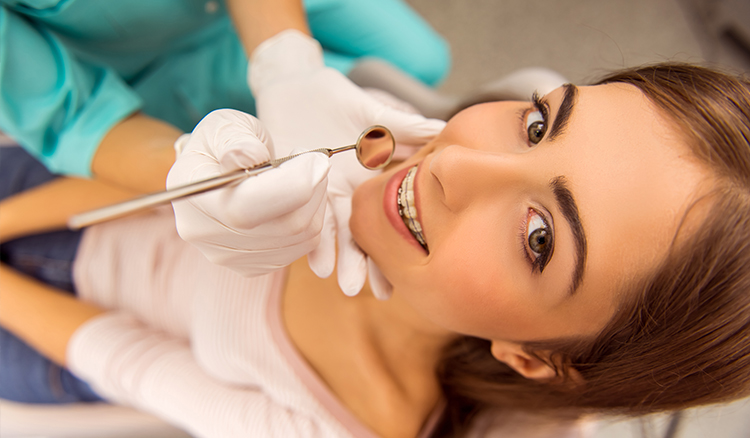When the teeth are out of alignment, the facial muscles may spasm, creating misalignment of the jaw. This can lead to temporomandibular joint (TMJ) disorders; also called TMDs. Symptoms can include headaches, neck pain, back pain and earaches. Treatment of TMDs depends on the severity of the disorder and ranges from muscle relaxation therapy to orthognathic surgery. No cosmetic procedures should be performed until the TMD is corrected.
What You Should Know
Is Your New Bite a Bad Bite?
Occasionally, even properly constructed restorations can contribute to bite problems. This typically occurs when a disharmony already exist in the mouth. In such cases, any irritation or change- even as minor as that caused by crowns or orthodontics- can initiate a muscle spasm and TMJ disturbance. Such problems may be unforeseen by dentists. When noted, however, they should be corrected quickly. If allowed to persist they can be extremely difficult to repair.
Deep Overbite- What is the best treatment?
The treatment of choice for deep overbite is orthodontics, which may be combined with orthognathic surgery depending on the severity of the problem. Orthodontic treatment may consist of intruding the anterior teeth, eruption the posterior teeth, or a combination of both, based on your facial profile and growth potential, as well as the extent of the overbite.

Closed Bite- What is the best treatment?
If the closed bite is not too severe, the back teeth often can be built up with the crowns or inlays, which allows the front teeth to be lengthened through bonding, veneers or crowns. However, opening the bite through orthodontic treatment is typically the best option. Restorative procedures such as bridges, bonding or veneers can be performed after the orthodontic treatment is complete. Orthognathic surgery also may be required if the lower jaw needs to be repositioned.
Crossbite- What is the best treatment?
Although full crowns or composite resin bonding often can be used to “build out” the upper arch, this treatment achieves only limited aesthetic modification. The best way to correct a crossbite is through orthodontics. If the crossbite is particularly severe, orthognathic surgery may be required in addition to orthodontics. This combined approach can result in a dramatic improvement in facial appearance. Best of all, the teeth tend to remain in their new positions once the condition is corrected.
Open Bite- What is the best treatment?
Orthodontics, occasionally combined with orthognathic surgery, is the best treatment for an open bite. It not only corrects tooth deformity but also moves underlying bone inward, enabling the lips to close properly.
Protrusion- What is the best treatment?
Orthodontic treatment, combines with orthognathic surgery in severe cases, is the best way to correct protrusion. In some cases, two to four teeth may be extracted to achieve good results. Keep in mind, however, that overcorrection is a major concern when teeth are extracted. Overcorrection occurs when the teeth are moved back too far, resulting in a sunken appearance. No matter how severe your protrusion, do not have your upper teeth extracted and replaced with a bridge. This typically won’t correct the bone deformity and may seriously impair your chewing ability.


